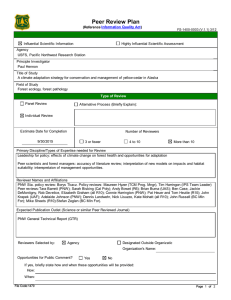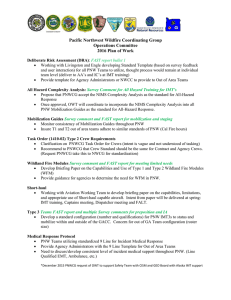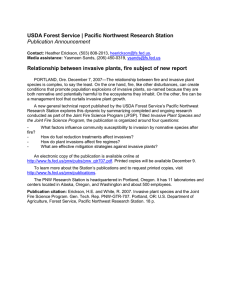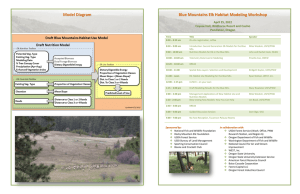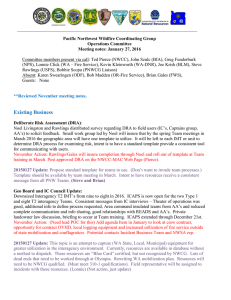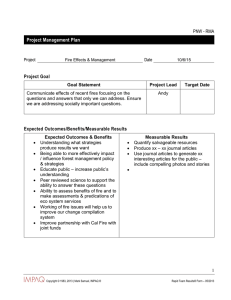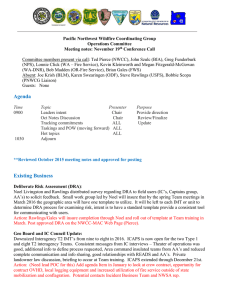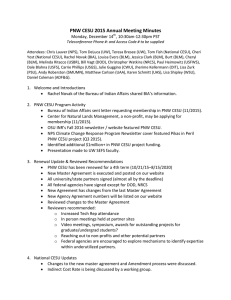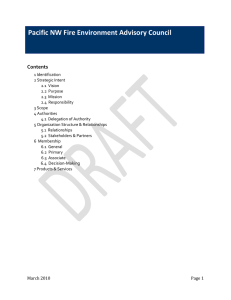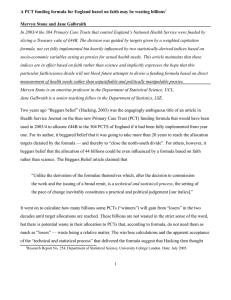Document 11337091
advertisement
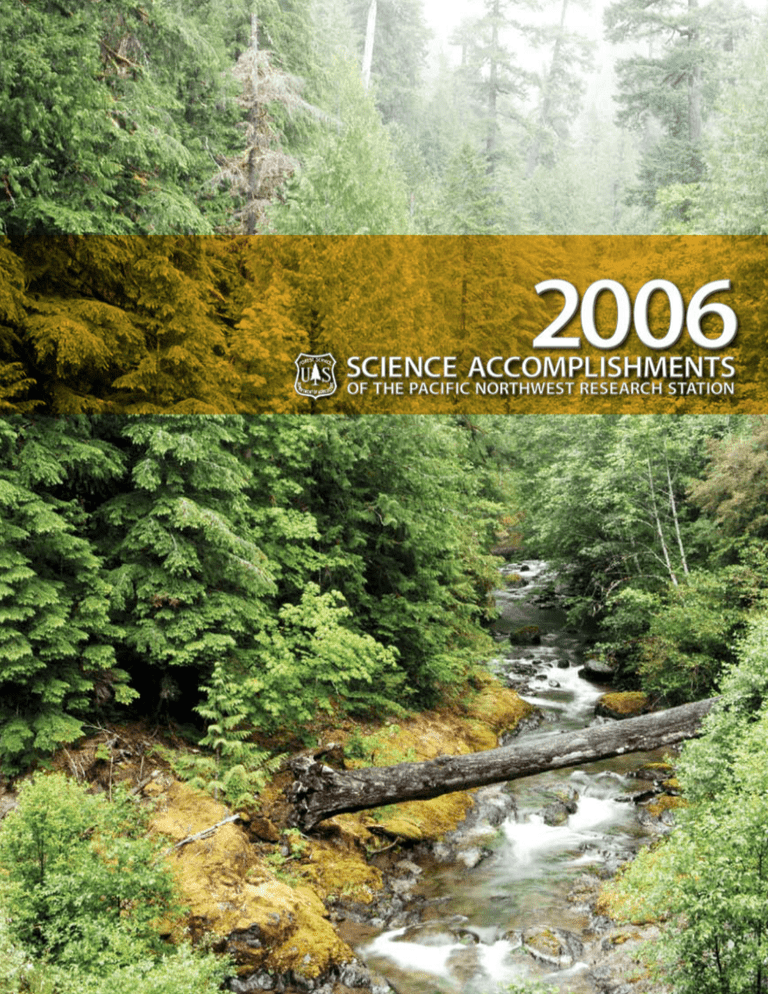
Cover photo : Tom Iraci Table of Contents 5 A Message From the PNW Station Director 6 PNW Research Station: The Setting 22 Goal 2: Assess the Status and Trends of Ecosystems and Natural Resources and Their Uses 7 Goal Accomplishments 30 Goal 3: Develop Science-Based Options for Informed Management 8 Goal 1: Develop a Fundamental Understanding of Ecological, Social, and Economic Systems and Their Interactions 54 Goal 4: Communicate Science Findings and Enhance Their Application 67 Publications 78 Finances and Workforce 68 Symposia, Workshops, and Tours 79 Cooperators Who Received Funding for Studies 70 Conservation Education 79 Clients Who Provided Funding for Studies 73 Honors and Awards 80 PNW Research Station Organization 77 Research Context Bob Szaro Vision and Mission: We are highly sought for our scientific leadership and impartial knowledge. Our mission is to generate and communicate scientific knowledge that helps people understand and make informed choices about people, natural resources, and the environment. SCIENCE 2006 aCCOMPLISHMENTS John Laurence STATION DIRECTOR’S MESSAGE A MESSAGE FROM THE STATION DIRECTOR S ince assuming the position of Station Director at the Pacific Northwest (PNW) Research Station in spring 2006, I have had the pleasure of visiting employees, partners, customers, and stakeholders. It is apparent to me that their collective dedication makes possible the high volume of quality publications, technology, products, and services that are produced by the Station year after year. Some highlights for 2006: ➤ The Pacific Northwest is generally well positioned as a world leader in wood production; challenges include forest fragmentation, parcelization, and international competition. ➤ Alaska yellow-cedar heartwood, its essential oil, and compounds from the heartwood prevent reproduction of the fungus that is responsible for sudden oak death. ➤ Sagebrush habitats are declining rapidly across western North America, with populations of over 350 associated plant and animal species at risk of extirpation. ➤ The Coastal Landscape Analysis Modeling Study (CLAMS) shows that hardwood and vegetation diversity may decline under current policies. ➤ An incident command tool for protecting drinking water (ICWater) was made available to all 50 states. The hard work of scientists at PNW Research Station is evident in their productivity. Last year they produced 500 publications—255 of which were journal articles. Their attention to quality and relevancy is what makes this Station a leader in the scientific community and is reflected in the demand for their products and services. In 2006, about 6,600 people attended symposia, workshops, field tours, and conservation education events sponsored by the Station. Over 120,000 hardcopy publications were distributed and hundreds of thousands of publications were downloaded. Truly impressive. In my visits to the Station’s labs, I have seen that the scientific workforce of PNW Research Station depends on an administrative support staff to keep our facilities functioning, hire and support our field crews, administer budgets, process grants and agreements, oversee the civil rights program, maintain our fleet of vehicles, and make our safety program the best it can be. In times of great change for the Forest Service in most of these areas, I am particularly grateful for the Station’s excellent administrative support staff. I look forward to the opportunity to lead an already excellent Station as we work to reach great heights in the future. For starters, we will strengthen our partnerships with stakeholders and customers in the coming year. As this report shows, partners are enormously important in accomplishing our work. And the satisfaction of a job well done comes when we know that our customers are putting our science to use. From my angle, our future looks bright. It is with this sense of optimism that I look forward to the year ahead. Bov Eav PNW Station Director January 2007 SCIENCE 2006 aCCOMPLISHMENTS PNW Research Station: The Setting ➤ 11 laboratories and centers in Alaska, Oregon, and Washington ➤ 11 active experimental areas (watershed, range, and experimental forests) ➤ Research also conducted in more than 20 research natural areas (RNAs) ➤ Headquarters in Portland, Oregon ➤ PNW is 1 of 5 research stations in the U.S. Department of Agriculture, Forest Service ➤ 479 employees (298 permanent, 181 temporary) A L A S K A Y Y Fairbanks Anchorage Laboratory or Center Y Experimental Forest, Watershed, or Range Juneau > Headquarters Y Sitka Y Seattle Olympia Wenatchee WA S H I N G T O N Y Y > Portland Corvallis Y Y La Grande Y Prineville Y O R E G O N Y
